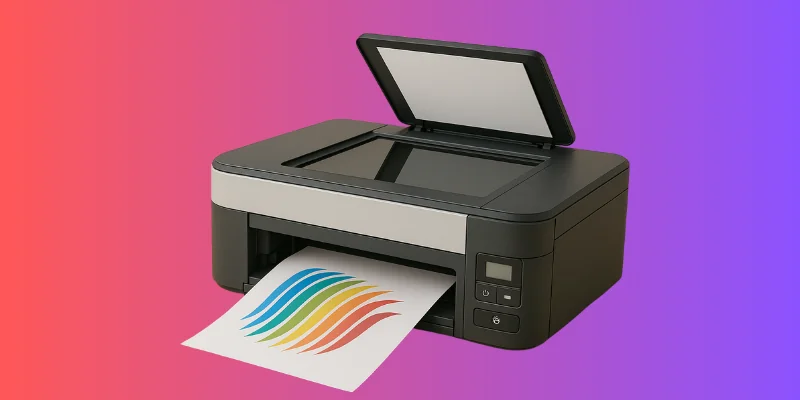All-in-ONE Printers Unlock Smart Printing for Every Need
Published: 22 Apr 2025
Did you know that over 60% of home and office users prefer all-in-one printers over standalone devices? These Printers can print, scan, copy, and fax, all in one compact machine. Whether you’re a student, a remote worker, or running a small business, an all-in-one printer saves space, reduces costs, and improves efficiency. Let’s explore the All-in-One printers:
Introduction
An all-in-one printer is a multi-function device that combines printing, scanning, copying, and sometimes faxing in a single machine. It is designed for home users, students, and businesses to save space, reduce costs, and improve convenience. These printers come in inkjet or laser models and offer wired and wireless connectivity options for easy printing from computers, phones, and tablets.
Importance of All-in-One Printers
- Space-Saving: One machine replaces multiple devices.
- Cost-Effective: No need to buy a separate printer, scanner, or copier.
- Time-Saving: Quick access to multiple functions in one place.
- Wireless Convenience: Print easily from phones, tablets, and laptops.
- Eco-Friendly: Reduces paper waste with double-sided printing.
- Ideal for Home & Office: Perfect for students, remote workers, and businesses.

Types of All-in-One Printers
- Inkjet All-in-One Printer: Best for home users, students, and photo printing.
- Laser All-in-One Printer: Ideal for offices needing fast and high-volume printing.
- Tank-Based All-in-One Printer: Uses refillable ink tanks for low-cost, long-term printing.
- Photo All-in-One Printer: Designed for high-resolution photo and graphic printing.
- Portable All-in-One Printer: Compact and lightweight, perfect for travel or mobile offices.
- Business All-in-One Printer: Built for bulk printing, faxing, and office document management.
Applications of All-in-One Printers
- Home Use: Print school assignments, photos, and personal documents.
- Office Work: Manage bulk document printing, scanning, and copying.
- Education: Teachers and students use them for study materials and projects.
- Business & Corporate: Ideal for invoices, reports, and contract printing.
- Photography: High-quality prints for photographers and designers.
- Freelancers & Remote Work: Print and scan documents from home offices.
- Healthcare & Legal: Used for patient records, legal contracts, and official paperwork.
- Retail & Small Shops: Print receipts, labels, and promotional materials.
| Advantages of All-in-One Printers |
|---|
|
| Disadvantages of All-in-One Printers |
|---|
|
Yes! They save space, money, and effort by combining printing, scanning, copying, and faxing in one device. If you need multiple functions, an all-in-one printer is a smart choice.
Inkjet printers use liquid ink and are great for color prints and photos. Laser printers use toner (powder) and are better for fast, high-volume printing. Choose inkjet for home use and laser for offices.
No, but it depends on how you print. You can connect via USB, Wi-Fi, or Bluetooth, depending on the model. If you print from a phone or cloud storage, you’ll need the internet.
Printers with refillable ink tanks (like Epson EcoTank) or high-yield toner cartridges (like Brother LaserJet) are the most cost-effective. They may cost more upfront but save money in the long run.
Yes! Most modern printers support wireless printing through AirPrint (Apple), Google Cloud Print, or printer apps. Just connect your phone and print instantly.
Most printers last 3 to 5 years, depending on usage and maintenance. Cleaning regularly and using high-quality ink or toner can extend their life.
Probably not! Faxing is outdated for most people, but some businesses and government offices still use it. If you don’t need it, you can save money by choosing a printer without fax.
Cheap printers often have small ink cartridges that run out quickly. Try using high-capacity cartridges, ink tank printers, or laser printers for lower costs.
First, turn off the printer and carefully pull out the stuck paper. Make sure the paper is aligned correctly in the tray and avoid overloading it. Cleaning the rollers can also help prevent jams.
For home use, go for HP DeskJet, Canon PIXMA, or Epson EcoTank. They offer good print quality, affordable ink, and wireless printing options.
Conclusion
So guys, in this article, we’ve covered all-in-one printers in detail. Whether you need one for home, school, or office use, these devices offer a convenient and cost-effective solution. If you want affordable and reliable printing, I recommend the HP OfficeJet Pro series for home users and the Brother LaserJet series for businesses. Think about your needs, budget, and print volume before making a choice. Which printer are you considering? Drop your thoughts in the comments below!

- Be Respectful
- Stay Relevant
- Stay Positive
- True Feedback
- Encourage Discussion
- Avoid Spamming
- No Fake News
- Don't Copy-Paste
- No Personal Attacks

- Be Respectful
- Stay Relevant
- Stay Positive
- True Feedback
- Encourage Discussion
- Avoid Spamming
- No Fake News
- Don't Copy-Paste
- No Personal Attacks
